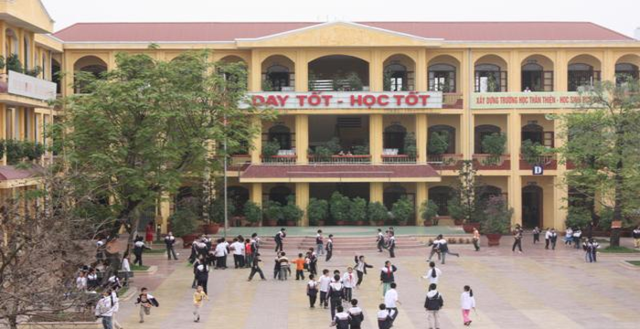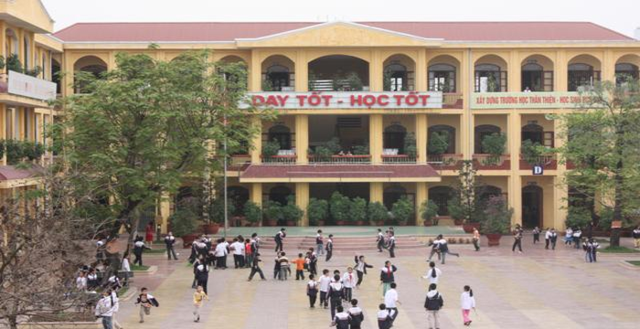
Reorganization of administrative units and the establishment of a two-tier local government model
The Steering Committee for the reorganization of administrative units at all levels and the establishment of a two-tier local government model has directed the reorganization and management of local public non-business units in line with the two-tier local government model.
Principles for the Reorganization and Management of Local Public Non-Business Units
Official Letter 68/CV-BCĐ dated May 28, 2025, provides guidance on the reorganization and management of local public non-business units in alignment with the two-tier local government model. The following principles should be observed:
First, the reorganization of local public non-business units under the two-tier local government model should not compromise the quality and effectiveness of public service provision, especially essential public services that cater to the basic needs of the community.
Second, for essential public services that directly serve the community and address their fundamental needs (such as education and healthcare), consideration should be given to transferring the management responsibility to the communal level, including public kindergartens, primary and secondary schools, and grassroots healthcare and cultural institutions.
Third, for public services related to economic development and sectors requiring concentrated resources, the management responsibility should be considered for transfer to the provincial People’s Committee or specialized agencies under their authority. This includes areas like agriculture and environment, science and technology, and other economic sectors.
Fourth, for public services with revenue streams and financial self-sufficiency (such as project management, land fund development, and site clearance), management can be assigned to either the provincial level (with inter-communal bases) or the communal level to provide services to residents and businesses.
Guidelines for Reorganizing Local Public Non-Business Units
The following guidelines are provided for reorganizing local public non-business units:
First, for public non-business units in the fields of education and healthcare – For the time being, maintain stability in the system of public non-business units in education and healthcare. Reorganization should only be undertaken when absolutely necessary, ensuring that it does not impact the essential services provided to the community.
Management of educational institutions, from kindergartens to secondary schools, including ethnic boarding schools at the district level, should be transferred to the communal level.
District-level medical centers will be transferred to the management of the Department of Health to provide services on an inter-communal and ward basis.
Maintain the existing commune health stations under the district-level medical centers or reorganize the health stations in the old communes into a single health station in the new commune, with health posts in the old communes to serve the residents.
Second, for public non-business units in the fields of agriculture and environment, science and technology, and other economic sectors (including District Agricultural Service Centers) – Consider streamlining and transferring management to the provincial level, with a network of service provision on an inter-communal basis, taking into account the conditions and characteristics of each area.
Third, for public non-business units in the fields of project management, land fund development, site clearance, market management, and vehicle stations – Localities should establish public non-business units at the provincial level (with inter-communal bases) or communal level based on their conditions, characteristics, and ability to ensure self-balancing revenue sources for public service provision. These units should be self-sufficient in regular expenditure and fulfill their function of providing public services in these fields within their respective areas.
Fourth, for other public non-business units – Reorganize the district-level Radio and Television Stations as units directly under the multi-media communication agency or the provincial Radio and Television Station, responsible for providing communication services in the inter-communal area.
Transfer the management of district-level Cultural Centers or Cultural, Sports, and Children’s Houses to the communal level (where the headquarters of these units are located), tasked with providing cultural and sports services within the commune, inter-communal areas, and basic and essential public services within the commune.
For newly established communal-level administrative units, establish a single public non-business unit to provide essential and basic public services within the commune (except for communes where district-level Cultural Centers or Cultural, Sports, and Children’s Houses are currently headquartered).
Central Bank: No County-Level Branches, No Need for a Bicameral Government Structure
Are there any other adjustments you would like to make to this text? I can easily make further changes to ensure it suits your needs.
The State Bank of Vietnam emphasizes the unique structure of this organization, which lacks a district-level hierarchy. This arrangement effectively prevents conflicts that may arise during the transition to a new local government model. However, to align with practical considerations, certain legislative amendments are necessary.
“Provincial Mergers and the Elimination of District-Level Administration: Proposed Plans for the Reorganization of Schools, Hospitals, and Other Institutions Under the Municipal People’s Committee”
With the two-tier local government structure in place, the focus now shifts to optimizing the functioning of public service units. The government will task the Ministry of Home Affairs, in collaboration with relevant ministries, to formulate and propose amendments or new regulations governing the organization and operations of these units. These updated guidelines will ensure efficient and responsive public services that meet the needs and expectations of the people.
The Big Three: How Vietnam’s Powerhouse Cities Continue to Thrive with Special Autonomy
The localities that are subject to the merger will continue to benefit from the special mechanisms previously enacted by the National Assembly.
The Future of Ho Chi Minh City: Restructuring for Efficiency
A bold new vision for Vietnam’s economic hub.
Introducing Ho Chi Minh City’s upcoming revolutionary “5-in-1” hub: the one-stop destination for culture, sports, information, markets, and a dedicated space for our youth. This dynamic center will transform the way people engage with essential services, bringing together a diverse range of offerings under one roof. Get ready for an exciting future as we create a vibrant, inclusive space that serves the community and becomes the heart of the city’s public services.




















